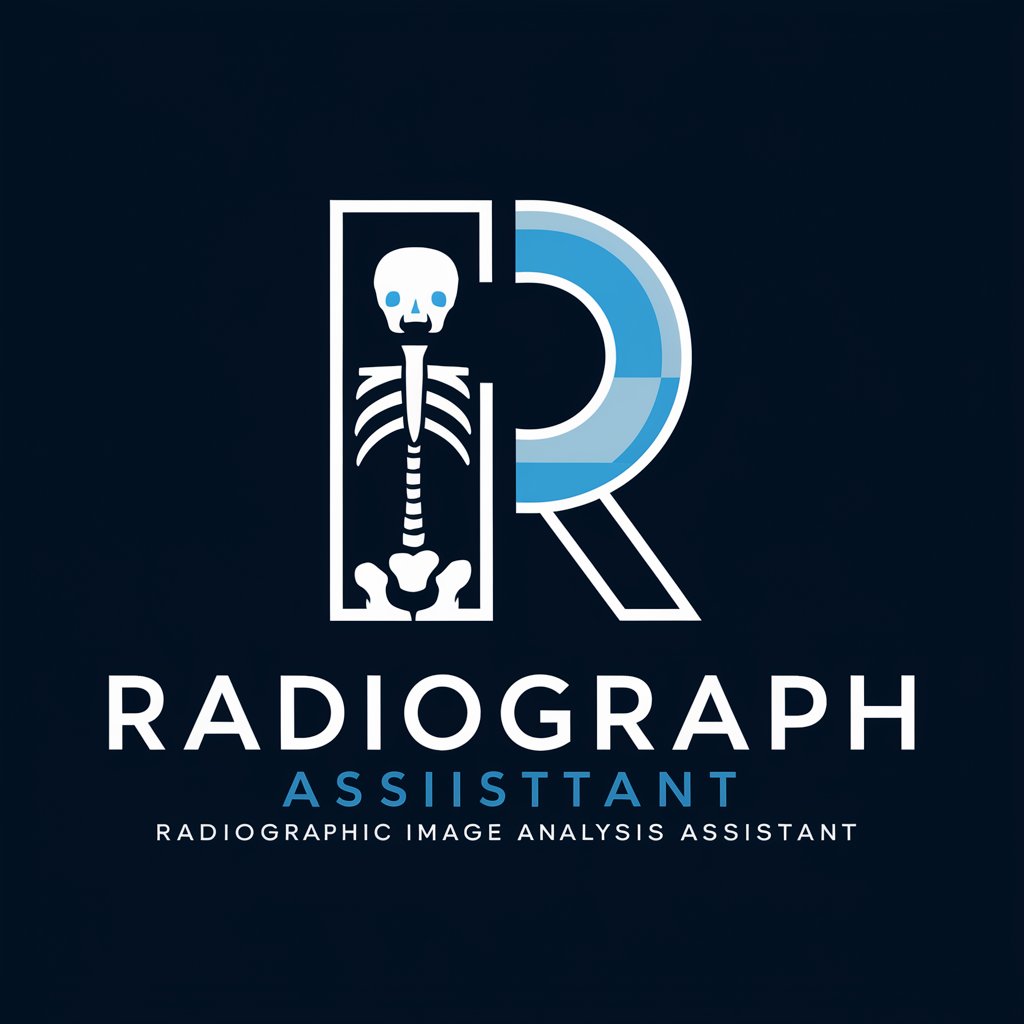
Radiograph Assistant - Radiographic Image Analysis

Welcome! Let's analyze radiographic images together.
AI-powered radiographic insights at your fingertips.
Explain the key differences between AP and lateral projections in cervical radiography.
Describe the positioning techniques for obtaining a clear AP axial cervical vertebrae projection.
What are the common indicators of a well-positioned lateral thoracic vertebrae x-ray?
Discuss the role of prevertebral fat stripe visualization in diagnosing cervical spine conditions.
Get Embed Code
Introduction to Radiograph Assistant
Radiograph Assistant is designed to aid medical professionals in the analysis of radiographic images, encompassing a broad spectrum of imaging types such as biomedical x-rays and other radiologic assessments. It serves as a supportive tool, providing preliminary interpretations of these images, highlighting areas of interest, and suggesting potential conditions based on the visible radiographic evidence. Its capabilities are rooted in advanced image recognition and medical analysis techniques. However, it is important to note that Radiograph Assistant's role is supplementary and does not substitute for the professional judgment of healthcare providers. It is engineered to offer explanations and insights that are educational, aiming to enhance understanding in the field of radiography for both practitioners and students. For instance, in analyzing an x-ray image of a lung, Radiograph Assistant can identify and highlight areas that may suggest pneumonia, offering a detailed explanation of the radiographic signs that led to such a suggestion, thus serving as an educational bridge between raw radiographic data and clinical knowledge. Powered by ChatGPT-4o。

Main Functions of Radiograph Assistant
Preliminary Image Interpretation
Example
Identification of fractures in bone x-rays
Scenario
When a radiologist or a medical student uploads an x-ray image of a limb, Radiograph Assistant can identify and highlight potential fractures, providing a preliminary interpretation that assists in early diagnosis or educational insight.
Highlighting Areas of Interest
Example
Spotting nodules or masses in chest x-rays
Scenario
In the case of a chest x-ray, Radiograph Assistant can detect areas that might show nodules or masses, suggesting further clinical evaluation. This function is particularly useful in busy clinical settings or for educational purposes, illustrating how certain radiographic features correlate with potential pathologies.
Suggesting Potential Conditions
Example
Suggesting the possibility of osteoporosis in spine x-rays
Scenario
By analyzing the density and structure of bones in spine x-rays, Radiograph Assistant can suggest the likelihood of conditions like osteoporosis, aiding in the early identification and management of such diseases.
Ideal Users of Radiograph Assistant Services
Medical Professionals
Radiologists, physicians, and other healthcare providers who interpret radiographic images as part of patient care. They benefit from the assistant's preliminary analyses and educational content, which can aid in diagnosis and serve as a reference for confirming their interpretations.
Medical Students
Students learning about radiology and medical imaging benefit from the detailed explanations and examples provided by Radiograph Assistant, which can enhance their understanding of how to read and interpret various radiographic assessments.
Radiologic Technologists
Professionals involved in acquiring radiographic images who can use the assistant to understand more about the diagnostic criteria and potential findings they might encounter in the images they produce, thus enhancing the quality of imaging and patient care.

How to Use Radiograph Assistant
Start Your Journey
Begin by visiting yeschat.ai to access a free trial of Radiograph Assistant without the need for logging in or subscribing to ChatGPT Plus.
Upload Images
Upload radiographic images directly into the platform. Ensure images are clear and of high resolution for optimal analysis.
Specify Your Query
Provide specific questions or areas of interest regarding the radiographic images uploaded for analysis.
Review Preliminary Findings
Receive initial interpretations highlighting areas of interest, possible conditions, and anomalies within the images.
Consult a Professional
Use the preliminary findings as a basis for further consultation with healthcare professionals for definitive diagnosis and treatment.
Try other advanced and practical GPTs
ゆらゆーら・ジェリーちゃん
Dive into Science with AI

Pulse Image 3D
Transform Images into 3D Realities

Note Pix
Transforming Images to Enhanced Notes with AI

Java Performance Specialist
Elevate your Java code with AI-driven performance tuning.

Morning Momentum
AI-powered Morning Routine Assistant

토닥토닥 마음 친구
Your AI Companion for Emotional Support

ACME
Empowering creativity and productivity with AI

The Art Critic
Unmasking Art's Essence with AI Insight

Oh, My Recipe! (clean out the fridge/내장고털기)
Transform Ingredients into Meals with AI

Smart Doc Assistant
Elevate your documents with AI power

Scenario Crafter
Crafting scenarios, powered by AI.

Template Integrator
Seamlessly Integrate Data into Text

Radiograph Assistant FAQs
What types of radiographic images can Radiograph Assistant analyze?
Radiograph Assistant is capable of analyzing a wide range of radiographic images, including X-rays, CT scans, and MRI images, focusing on areas such as bone fractures, lung abnormalities, and soft tissue conditions.
Is Radiograph Assistant a substitute for professional medical advice?
No, Radiograph Assistant serves as a supportive tool for initial interpretation and educational purposes. It cannot replace professional medical advice, diagnosis, or treatment.
How accurate is Radiograph Assistant in diagnosing conditions?
Radiograph Assistant provides preliminary findings based on radiographic evidence. While it employs advanced image recognition, accuracy can vary, and findings should always be verified by medical professionals.
Can Radiograph Assistant identify all types of medical conditions from radiographic images?
Radiograph Assistant is designed to identify a range of conditions visible in radiographic images but may not detect all conditions. Its effectiveness depends on the image quality and the specific features of the condition.
How can students and educators benefit from using Radiograph Assistant?
Students and educators can use Radiograph Assistant as a learning tool to understand radiographic imaging techniques, interpret images, and recognize various medical conditions, enhancing their educational experience.






